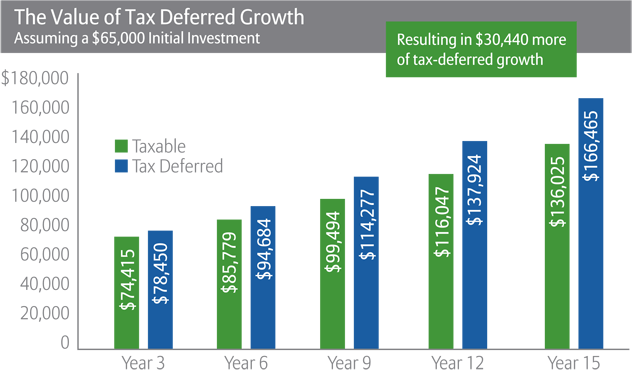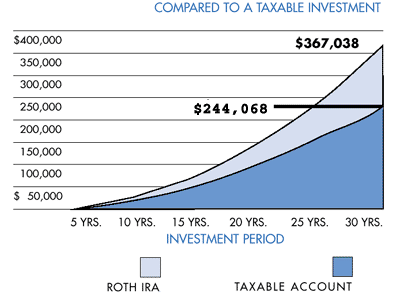Invest Like the 1% and Lower Your Taxes

Every responsible person knows that saving and investing is the key to a comfortable financial future. Determining which investment strategies are likely to be the most effective, however, is much more complex. Investments with a high potential for gain tend to entail more risk that can jeopardize a healthy portfolio. Likewise, essentially risk-free investments often have such low yields that inflation alone can result in real losses. In addition, investors must devise strategies to get around the taxes and regulations that have become an inescapable reality in modern society. Investors, therefore, must plan carefully to maximize the benefits of setting aside their hard-earned money for a better tomorrow.
Taxable vs. Tax Deferred vs. Tax Exempt Accounts
When funds are initially vested into a financial portfolio, they should be put into a segregated account to capitalize on some of the tax advantages available under federal law. Investors should focus on minimizing income and capital gains taxes because they reduce a portfolio's principal balance and affect compound growth. For example, instead of earning 6.5 percent interest on a $100,000 portfolio, an investor who pays a 40 percent income tax on these earnings would receive just 3.9 percent interest. While this might seem to be a small difference for a single year, the compounded effect over 40 years would mean the difference between $1,241,607 and $461,979, respectively. Serious investors, therefore, should carefully contemplate tax savings when building a financial portfolio.
Taxable Accounts
Ordinary taxable accounts offer unlimited flexibility at the cost of additional taxation. Investors who use taxable accounts will be responsible for ordinary income and capital gains taxes when income is initially earned. In most cases, taxable accounts do not make sense for an investor unless the individual needs full access to their savings without incurring an early distribution penalty. Investors in need of a taxable account should consider setting up an LLC or S corporation to enjoy the benefits of limited liability protection.
Tax-deferred Accounts

Most investors choose to put their money into tax-deferred accounts to enjoy the benefits of increased compound interest that can accumulate over time. Ordinary 401(k) retirement plans offer deferred interest for individuals. Many businesses choose to incorporate to take advantage of deferred taxation that can increase their compounded annual growth rate. In most situations, tax-deferred accounts make sense for ordinary investors who plan on saving for an extended period of time. Tax-deferred accounts are particularly important for younger investors who have many years to save before intending to withdraw funds for their retirement.
Tax-exempt Accounts
There are also several forms of tax-exempt investment accounts that investors can leverage. The most common form of tax-exempt investment account is a Roth IRA or Roth 401(k) retirement account. These plans offer the same advantages of tax-free growth, but they require investors to use post-tax funds. While the initial principal balance of a tax-exempt account might be lower, the advantage is that investors can capitalize on their lower tax bracket to save future money upon withdrawal. Investors looking to save money for charitable giving or a family foundation can also use other forms of tax-exempt accounts, such as a formal foundation fund or a registered nonprofit organization, to accumulate additional money for future generosity.
Investing to Avoid
 Many investors make the mistake of incurring too much risk when they first start out. Some investors believe that luck is on their side, and treat the stock market as a casino. Others mistakenly rely on the unqualified advice of a friend or close associate to make important investment decisions. Finally, there are well-intended investors who have made the mistake of putting all their money into a single investment that eventually loses all of its value. While there are rare exceptions, investors who follow these paths almost always end up loosing much of their hard-earned money. Worst of all, losing money can lead to investors feeling disenfranchised with concept of growing their portfolio.
Many investors make the mistake of incurring too much risk when they first start out. Some investors believe that luck is on their side, and treat the stock market as a casino. Others mistakenly rely on the unqualified advice of a friend or close associate to make important investment decisions. Finally, there are well-intended investors who have made the mistake of putting all their money into a single investment that eventually loses all of its value. While there are rare exceptions, investors who follow these paths almost always end up loosing much of their hard-earned money. Worst of all, losing money can lead to investors feeling disenfranchised with concept of growing their portfolio.
To prevent becoming irrationally risk averse by learning about the potential for losses the hard way, investors should understand what to avoid when making important decisions about their financial portfolios. Investors should start by developing a realistic understanding of the degree to which their own skills, experience, and talents can enable them to make good investment decisions. Not everyone is prepared to invest their own money, so relying on professional assistance or mutual funds can be appropriate in many situations.
Investors who insist on making their own investment decisions should understand that everyone wants to pick good investments. For this reason, millions of professionals spend their entire careers developing strategies to determine which securities are undervalued. The concept of an amateur investor sustainably competing in the financial markets, therefore, is fundamentally flawed. Investors who plan to invest their own money should start by learning the principles of finance, studying financial strategies, and testing their own abilities before proceeding. Understanding these limitations can shield investors from astronomical losses that could be incurred through poor decision making.
Growing Your Non-taxable Income
Investors looking to get started should begin by setting up a retirement account like a 401(k) or Roth IRA. These accounts can be converted at a later date, but the most important decision that investors should make is to decide to start saving immediately. The more money that investors set aside into tax-advantaged accounts now, the more non-taxable income investors will have in the near future. The simple mistake that the vast majority of investors make is to start saving too late in life. Investors can often get started with growing their non-taxable income by talking to their employer. In many instances, an employer is willing to match 401(k) contributions and provide assistance with setting up an account without any charge.
Before opening an account, investors should have a basic understanding of the different types of accounts that are available. As mentioned earlier, it is important for investors to decide on which account to open by first considering the tax implications of each account type. Many individuals have ended their life in wealth and happiness by simply choosing the right type of account and picking a reliable investment planner. Although your retirement may be decades away, you can ensure an enjoyable future by making some basic investment decisions today. Furthermore, your retirement will come sooner if you get started now rather than continuing to delay. Study the different types of investment accounts, then take immediate action to get started.
Traditional IRAs
Traditional IRAs were originally established under the Employee Retirement Income Security Act of 1974, which laid out the basic rules that continue to govern IRA accounts to this day. A basic tenant of ERISA is that funds set aside in an IRA account must be segregated from other funds and held in a reputable financial institution. Investors who open an IRA account can elect to invest their own money or use the assistance of a professional. When income is earned in an IRA account, investors are not subject to immediate income or capital gains taxes on resulting gains. However, it is important to remember that these taxes will eventually have to be paid when the money is withdrawn during retirement. Since the earnings can compound across several decades while they are in the account, traditional IRAs normally offer significant tax savings for most investors.
Roth IRAs

In contrast to traditional IRAs, Roth IRAs offer additional features that could be advantageous for many investors. The most significant advantage of a Roth IRA is that contributions are post-tax while the contribution limit remains the same. In exchange, there is no tax penalty for withdrawing these funds during retirement. For investors who want to save a higher percentage of their income, the ability to save post-tax earnings can be more beneficial. Furthermore, Roth IRAs have a higher deduction limit that can make them available for individuals earning as much as $193,000 per year. While traditional IRAs require investors to begin withdrawing their funds by age 70, Roth IRAs do not have these requirements. Finally, Roth IRAs allow investors to make withdrawals for certain purposes such as education with no penalty.
Advantages of IRA Accounts
Investors who use either an IRA or Roth IRA account are offered considerable advantages that can make a significant difference in their financial future. When saving for a down payment to purchase a home, many investors choose to temporarily neglect their retirement savings to make the purchase sooner. Few investors realize, however, that up to $10,000 of IRA funds can be withdrawn without any penalty to cover the costs of a down payment for a principal residence. If an investor ever faced bankruptcy, up to $1 million in an IRA account would be shielded from creditors. When the investor dies, a spouse can inherit an IRA account without any tax penalty. Furthermore, heirs can also receive funds from an IRA account without having to pay the estate tax. The potential benefits of an IRA account, therefore, should be fully considered before electing to neglect these favorable advantages.
Dividends
Investors should keep in mind that there are special rules when calculating gains derived from dividends. Under ordinary tax rules, dividends are taxable as income. However, the qualified dividend rule allows dividends issued after 2002 to be taxed as capital gains under certain circumstances. To be considered a qualified dividend, the distribution must come from a U.S. corporation and the stock must have been held for at least 60 days before the dividend was issued. There are no income or personal qualification requirements for investors to receive these benefits. While dividends were once seen as a tax-inefficient mode of earnings distribution, investors should be aware that the qualified dividend rule has made these payments more common.
Life Insurance
A creative way to pass money to the next generation is to use life insurance. Under federal tax law, life insurance payments made to heirs and spouses are subject to neither estate taxes nor income taxation. Combined with the fact that life insurance is a low-margin industry, this can be the most efficient mode of passing on money in many situations. The problem, however, is that life insurance depends on statistics that guarantee a wide distribution of outcomes. While a life insurance policy might be priced assuming that an individual has eight years to live, most of the estate's assets could be depleted if the individual ends up living 20 years. Furthermore, life insurance incentivizes early death, so many investors are uncomfortable about these potential implications. For life insurance to be used in this way, therefore, it often depends on the risk tolerance of the beneficiaries and the personal feelings of the investor.
Selling at a Loss
Before getting started with investments, investors should understand that yesterday's reality is irrelevant to today when making financial decisions. Unfortunately, many investors fail to recognize how irrational escalation of commitment can make keeping a failed investment appear reasonable. Although something may have been worth more in the past, there is no reason to expect the same item to be worth more today on the sole basis of its historically higher valuation. Many who invested in newspapers, for example, learned this the hard way when, despite research indicating the relevance of the Internet's growth, they failed to diversity their portfolios. Statistics imply that losses are naturally incurred by anyone, so in the competitive environment, investors can earn as much by knowing when to sell at a loss as by buying the winning investment.
What Else?
What other methods do you use to diversify your investments and lower your taxable income? Toss them in the comments and let's see how many different methods we can come up with.


